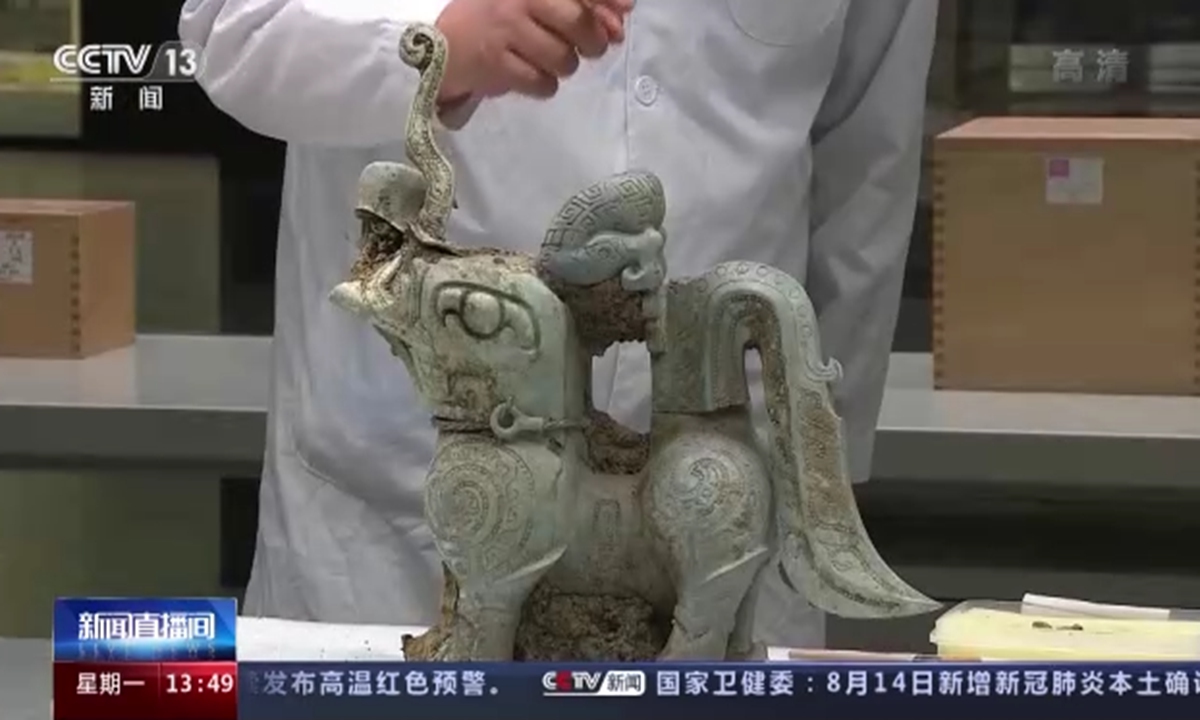Conny Waters- AncientPages.com – Strange mythical beasts appear in tales worldwide. In most cases, their description fits a specific category, and it’s possible to define the nature of the peculiar animals.
In Chinese mythology there are dragons, the Gong Gong water monster, Qilin, and many others that play an essential role in ancient Chinese stories.

Photo: Screenshot from web
Sometimes archaeologists unearth pre-historic statues made in the image of a mythical creature, but there are also cases when scientists come across something truly baffling.
During recent excavations of the Sanxingdui ruins in Sichuan Province, China, archaeologists unearthed a peculiar mythical beast with four wings.
“The little mythical beast was found on the top of a bronze statue in Pit No.8. The four-winged mythical beast has a round tiger-like head with sharp teeth and carries a sacred tree on its back.
The beast is seen with a sacred tree on the back, a “different state of mind the ancient Shu people have at the time,” as archaeologists speculated. The mythical beast is said also may have multiple functions.
Moreover, a pig-nose dragon bronze ware was also found during the most recent excavation, where archaeologists speculate that the bronze may have been a special decoration for a building,” the Global Times reports.
The never-before-seen mythical beasts were also unearthed along with another strange ancient statue depicting an animal with a pair of hollowed wings.
The report said that the four-winged mythical beast is a cylindrical hollow tube nearly 1.3 meters long, 15 centimeters wide, yet only about 3 millimeters thick.
The constructors at the time most likely threaded the tube into a hole in a building and fastened it with nails through two nail holes at the end of the tube.
“We inferred that the tube was a decoration on the most eye-catching part of a building, such as the roof corners or roof ridges,” Zhao Haoan , an archaeologist from the Sanxingdui Ruins excavation team, told Xinhua.
The artifact’s age remains undetermined, but it is made of bronze, and its body is covered with various patterns, including dragon scales, feathered wings, and Qilin-style feathers.
See also: More Archaeology News
The head of the tube is an animal face with a rectangular, wide, and long nose that “looks like a pig nose,” added Zhao.
“So we have temporarily named it after the pig-nose dragon.”
Written by Conny Waters – AncientPages.com Staff Writer





